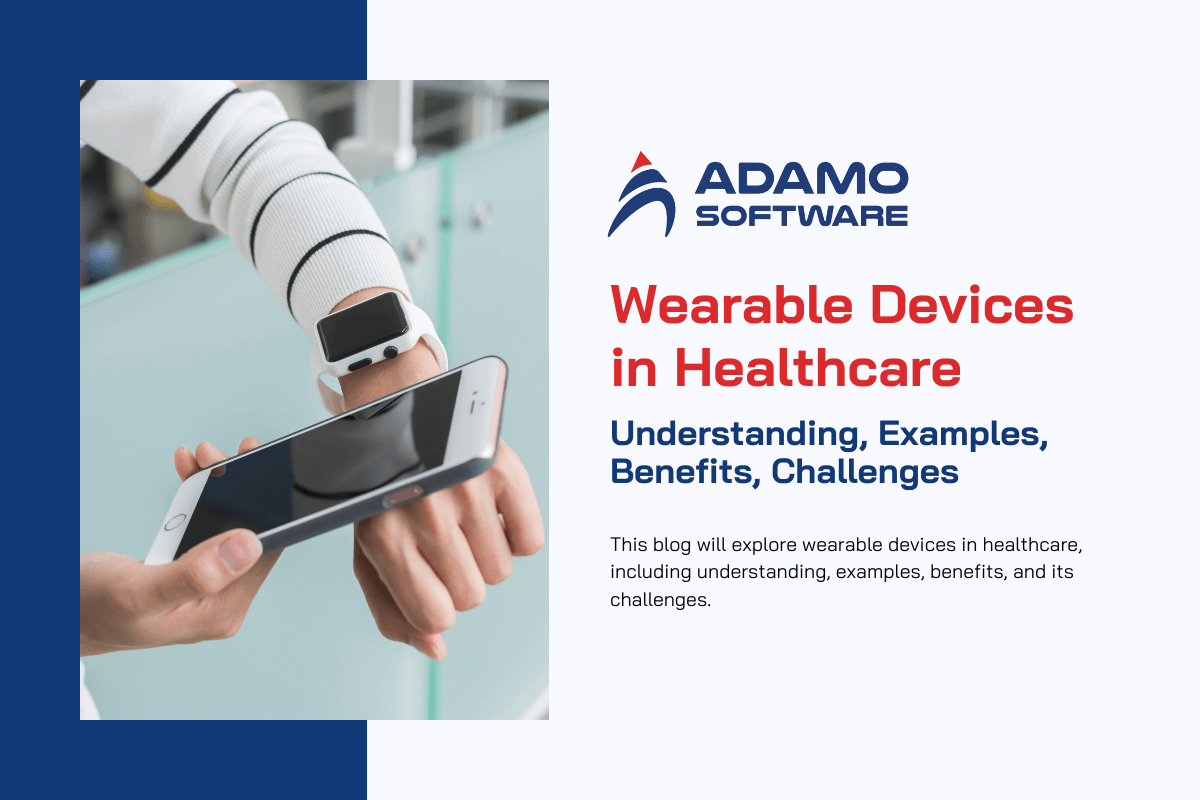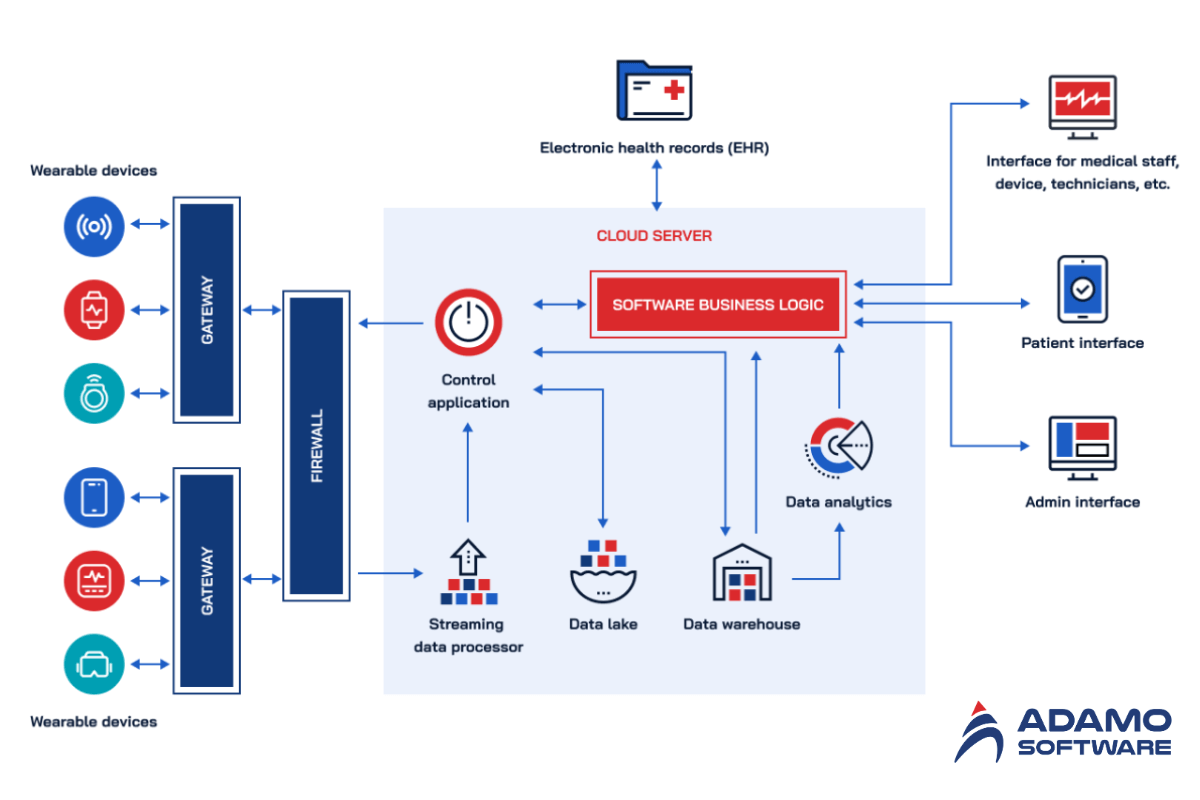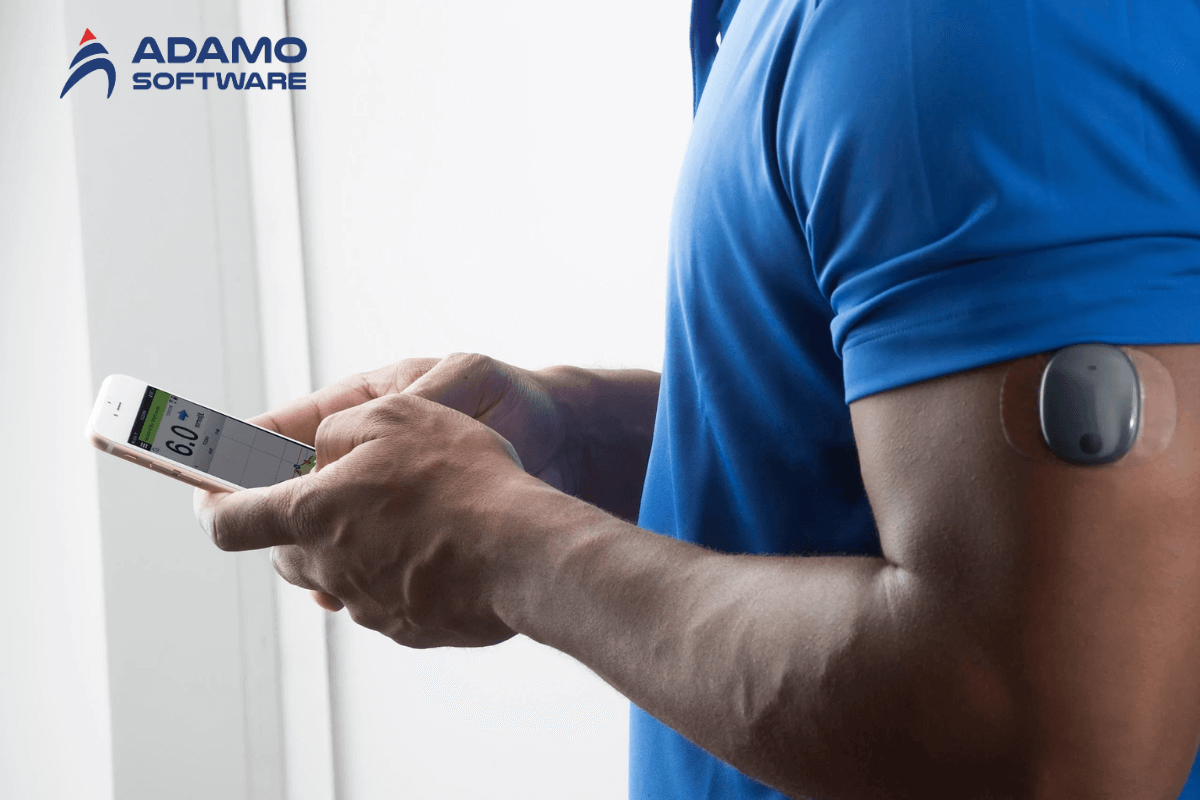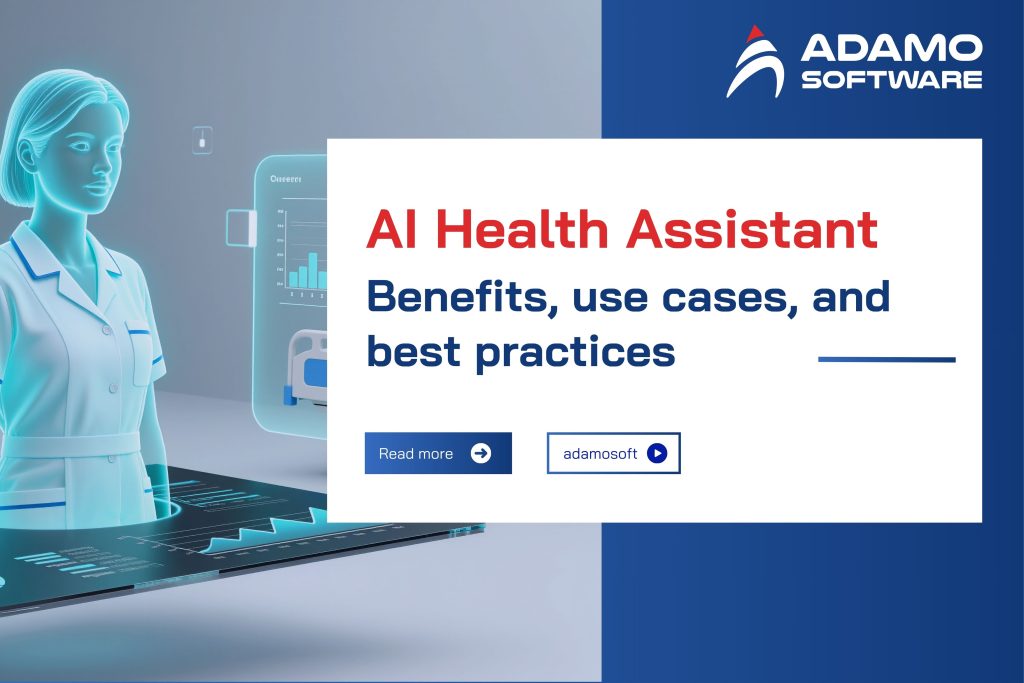Wearable Devices in Healthcare: Understanding, Examples, Benefits, Challenges

In recent years, consumer fitness trackers, smartwatches, and heart rate monitors have become very popular. They allow users to track their health metrics and fitness goals. Smartwatches account for a major segment of the global wearables market. One in five adults in the United States (21%) say they regularly wear a smartwatch or fitness tracker, according to the Pew Research Center. In the future, the popularity of smartwatches will skyrocket and surpass that of fitness trackers.
In this article, we will explore understanding these emerging technologies, their benefits, challenges, and some of the best examples of wearables in healthcare in 2024.
I. An Overview of Wearable Tech in Healthcare
Before diving into the benefits, challenges, and common wearables devices in healthcare, let’s take a look at a general overview of what wearables devices are in healthcare.
Wearable devices in healthcare include technological gadgets, and medical devices that customers can wear on their wrists or integrated into their clothes. It uses sensors to monitor our health. These types of sensors collect data throughout the day, helping healthcare providers and patients get a more comprehensive picture of their health. Prominent examples of wearable devices in healthcare include smartwatches, continuous glucose monitors (CGMs), etc. In particular, these healthcare wearable devices are designed specifically for each user to track and collect real-time data about their health and fitness.
The technological advancements in healthcare and the growing demand for improving their health have boosted healthcare wearable app development. Several companies in the market are developing more smart devices such as Fitbit, biosensors, and hearing aids. In addition, the an increasing prevalence of chronic diseases and lifestyle-related disorders. This factor is expected to drive the sales of wearable medical devices during the forecast period.
According to mHealth Intelligence 2023, approximately 35% of adults in the United States are using wearable healthcare devices. Additionally, 40% are using healthcare-related apps. The healthcare wearables market is estimated to be worth US$ 40.7 billion by 2023. It is expected to reach US$ 69.2 billion by 2028. The CAGR is around 11.2% during the forecast period. With the ability to transmit and store data wirelessly, healthcare wearables and technologies have gained widespread popularity. They are increasingly popular and trusted by consumers.
In addition, the increasing use of cloud computing enables information sharing to become more feasible. This leads to improved connectivity between doctors and patients. This is expected to be essential for the widespread use of wearable devices in healthcare for remote monitoring.
Furthermore, the integration of advanced data analytics with wearable healthcare devices is expected to boost user engagement. The demand for wearable devices in healthcare is sure to be further boosted by the growing interest of the people. Such as proactive health management, fitness tracking, and health awareness.
For example, 2021 statistics from the International Diabetes Federation (IDF) show there are approximately 537 million adults with diabetes. This number is expected to increase significantly, to around 643 million by 2030 and around 783 million by 2045.
You can explore more about What is remote patient monitoring? Tech stacks and real-life examples here.
II. Architecture of Cloud-Based App for Wearable Devices in Healthcare
Understanding the architecture of cloud-based application solutions that integrate weblog devices helps enterprises enhance their operations.
The solution includes user interfaces for patients, healthcare professionals, and medical device technicians and an administrative dashboard. It supports accessing analyzed data from wearable devices and sending notifications and commands to the wearable devices.
The solution includes a cloud data storage server that receives data from wearable devices through gateways and firewalls. The cloud server, includes data storage, processing, and analysis modules. The advantage of this solution is that it also possesses a user interface for patients, medical staff, medical device technicians, and administrators to access collected and analyzed data from the wearable device. Then send commands to the wearable device (e.g., start pain management), etc.

The diagram presents a detailed flow of how wearable medical devices interact with a cloud-based healthcare system. Here’s a breakdown:
– Wearable Devices: Various devices like sensors, smartwatches, and fitness trackers gather health data.
– Gateway: This data is transmitted through gateways to ensure secure and efficient data flow.
– Firewall: Acts as a security layer, protecting the data from unauthorized access.
– Cloud Server: This is the core of the system, featuring:
- Software Business Logic: Manages the overall operations and functionalities.
- Control Application: Regulates the data flow and device operations.
- Streaming Data Processor: Processes real-time data streams.
- Data Lake: Stores raw data for flexible analysis.
- Data Warehouse: Keeps structured data for reporting and querying.
- Data Analytics: Analyzes data to provide actionable insights and trends.
– Interfaces:
- Patient Interface: Allows patients to view their health data and track their progress.
- Admin Interface: Enables administrators to manage the system and ensure everything runs smoothly.
- Medical Staff Interface: Provides healthcare professionals with the necessary data to make informed decisions.
– Electronic Health Records (EHR): The cloud server integrates with EHR systems, ensuring that patient records are updated automatically with the latest data from the wearable devices.
This architecture enhances the efficiency of healthcare delivery by ensuring secure, real-time data access and management, benefiting patients, medical staff, and administrators alike.
III. Examples of Wearable Technology in Healthcare
Here is a curated list of the best examples of wearable technology in healthcare for different healthcare tracking needs.
1. Blood pressure monitors
Quardioarm blood pressure monitor – this is one of the best wearable devices in healthcare on the market and has over 2 thousand 5-star reviews. The display provides users with accurate blood pressure readings right on their phones. Home blood pressure monitors are still the most accurate devices on the market. The Quardioram blood pressure monitor can connect to smartphones to store blood pressure data.
2. Glucose meters
Freestyle Libre 2 – this advanced blood glucose reader is known to be the best wearable device in healthcare on the market for blood glucose monitoring for diabetics. It provides a device that is placed on the upper arm and uses phone sensors to measure readings from the device. This device is ideal because it reduces the need to “prick” the patient’s finger as the device can be used up to every seven days.

3. ECG monitors
Apple Watch – Apple’s technology is always ahead of the competition. Apple Watch is a smartwatch that can detect irregular heart rhythms and provide accurate ECG results. However, although Apple Watch technology is advanced, it still cannot detect heart attacks, blood clots, strokes or other heart-related conditions, such as congestive heart failure.
4. Fitness trackers
Fitbit Charge 5 – This smartwatch is known to be one of the most accurate and easy-to-navigate fitness trackers available today. This compact and sleek design accurately tracks everything from heart rate to step count and has a battery life that lasts up to 7 days. Fitbit has improved its technology over time and has very accurate, regularly updated software to accurately track and store your health and fitness information.
5. Integrated Activewear
NADI X Activewear — Advanced technology is now integrated into athletic apparel and comes in all different shapes and sizes. NADI X has many 5-star reviews. The brand uses gentle vibrations from sensors built into the garment to inform the wearer whether they are practicing yoga poses correctly. This can help with overall balance and help better achieve fitness goals.
IV. Benefits of Wearable Devices in Healthcare
It’s no surprise that many companies are investing in wearable devices in healthcare development, as this technology offers significant opportunities and benefits for the healthcare sector. Generally, these compact devices enable industry players to achieve the following goals:

1. Integration of Personal Technology in Healthcare
Using wearable devices in healthcare involves people using their devices for both work and medical purposes, thereby integrating personal technology into the healthcare process.
With the advancement of consumer-grade technology, the use of personal wearable devices in healthcare for various healthcare purposes has increased significantly. From smartphones and tablets to health trackers and smartwatches, patients are increasingly using their own devices to track health metrics, access medical information, and contact healthcare providers.
2. Heath Sign Monitoring
Wearable devices in healthcare play an important role in modern healthcare. People can monitor many vital signs and parameters, including heart rate, skin temperature, heart rate variability, and respiratory rate. Wearable devices in healthcare that provide continuous monitoring also improve data accuracy and reliability by collecting patient data over some time and under varying conditions.
– Monitor physical health activities. Fitness trackers like wearable smartwatches or other health-tracking technologies are great for those who want to track sports activities. This is not just about tracking steps or fitness workouts, but also tracking the patient’s overall movement and vitality.
– Monitor mental status. This is a new product for wearable devices in healthcare. It can monitor mental behavior and detecting human psychological states is possible. Wearable health technology is equipped with sensors to monitor a patient’s mental health. Some sensors can even monitor heart rate, body temperature, blood pressure, and other vital signs through mental health wearables.
3. Ensuring Data Integrity and Compliance
Wearable devices in healthcare providers must protect patient data integrity, and maintain regulatory compliance. At the same time, ensure high-quality care by detecting personal device-based risks and emphasizes the importance of certified medical devices. Educating patients about the benefits of medical-grade wearables is important. Highlighting the potential limitations of using their own devices further enhances the effectiveness and safety of Remote Patient Monitoring (RPM).
4. Rehabilitation and Health Maintenance
Wearable devices in healthcare save time and costs for hospitals while providing convenience for patients through wearable medical technology. During rehabilitation, patients must be continuously monitored. Thanks to wearable health monitoring devices, the process becomes more efficient. First, patients can receive rehabilitation outside the hospital environment, which enables a reduction in the cost of hospital patient care. Second, monitoring becomes more effective as it simplifies tracking a patient’s ongoing health and recovery. This results in more accurate data about the patient.
5. Medical education
Another major advantage of wearable tech in healthcare is its ability to simplify access to all the information you need. You can get articles, papers, and other research right from your phone.
According to Primary Care, “the integration of patient-generated health or medical data, with big data like pervasive health data, into the EMR along with other biological and genetic data is very powerful.”
V. Challenges of Wearable Tech in Healthcare
While the adoption of wearables in healthcare offers many benefits, it also carries risks. Particularly about data security, privacy, reliability, and accuracy.
1. Device Malfunctions
Like other IOT devices, wearable devices in healthcare are susceptible to malfunction, misuse, or incorrect results. Therefore, healthcare providers need to specifically guide users to get the most out of healthcare wearables.
For example, users may encounter difficulties if the device runs out of battery or cannot connect to Wi-Fi. Additionally, patients may experience other problems that cause inaccurate data or measurements.
To address this challenge, application developers and healthcare device manufacturers must build in measures to protect users. However, consumers also need to be responsible for protecting personal information. Users are responsible for questioning the information they receive, especially if there are discrepancies between their symptoms and digital output.
2. Data Security
One of the key benefits of wearable devices in healthcare is the availability of large amounts of patient data for doctors to analyze and act upon. However, that data is at risk of data breaches and stored information falling into the wrong hands.
Developers of wearable devices in healthcare must fully comply with HIPAA regulations and protect data stored in electronic health records (EHR). This is especially important to keep in mind when sharing clinical trial data. Any use of the EHR is subject to strict data anonymization measures to prevent breaches of personal information from being leaked into the public domain.
3. Accuracy and Lack Thereof
One significant challenge with wearable devices in healthcare is ensuring accurate and reliable data collection. Wearable devices in healthcare have the potential to provide valuable insights into our health and daily activities. However, inaccuracies can undermine their effectiveness. High accuracy depends on factors such as sensor calibration, placement, and the quality of the algorithms used to analyze the data.
Healthcare wearables typically rely on sensors to collect a variety of physiological signals, such as heart rate, sleep patterns, and step counts. However, these sensors can suffer from issues that affect their accuracy. Factors that reduce measurement accuracy include motion, signal interference, and device placement.
To address this challenge, developers and manufacturers of healthcare wearables should invest in research and development. This includes improving sensor technology, improving signal processing algorithms, and ensuring rigorous calibration procedures.
Moreover, interpreting the data collected by wearable devices in healthcare presents another significant challenge. To contextualize this information and transform it into meaningful insights, advanced data analytics techniques, and machine learning algorithms are required. The accuracy of these algorithms is vital for differentiating between noise and relevant data, ensuring that users receive precise feedback.
4. Interoperability and Connectivity
One of the main challenges in wearable devices in healthcare is the lack of system interoperability and connectivity. This problem stems from the fact that integrating patient data through wearable tech is still a relatively new area in healthcare. Wearable devices and health systems often use various protocols and standards, making it difficult to share and integrate data across different platforms. Consequently, healthcare providers might struggle to access a complete and unified view of a patient’s health information.
5. Data overload
Another significant issue with wearable medical devices is the overwhelming amount of personal health data they generate, leading to data overload. Wearable devices continuously record detailed information about an individual’s health conditions, which can cause patients to feel stressed and overly monitored. Additionally, the healthcare community encounters difficulties in efficiently managing and analyzing this vast amount of data. The immense of information can inundate healthcare systems, making it difficult to extract useful insights and provide timely interventions. As a result, the potential advantages of wearable technology might be undermined by the inability to handle the data efficiently.
VI. How Adamo Can Help You Build On-demand Healthcare Solutions
Adamo Software is a premium mobile app development outsourcing. We have enriching experience in creating on-demand healthcare solutions that leverage the latest in wearable devices in healthcare. By partnering with Adamo, you can seamlessly integrate these devices into your healthcare platform, ensuring accurate data collection and secure data transmission.

Adamo’s dedicated team provides comprehensive services from design to deployment, focusing on enhancing patient monitoring. Our healthcare software development expertise ensures your solutions are scalable, secure, and aligned with the latest healthcare standards. We also offer tailored support and maintenance to ensure your healthcare solutions remain up-to-date with the latest technological advancements.
You aim to develop a new healthcare app or enhance an existing platform. Adamo’s experienced team will help you build on-demand healthcare solutions. Collaborate with Adamo to harness the full potential of wearable medical devices and provide superior healthcare services to your patients.





